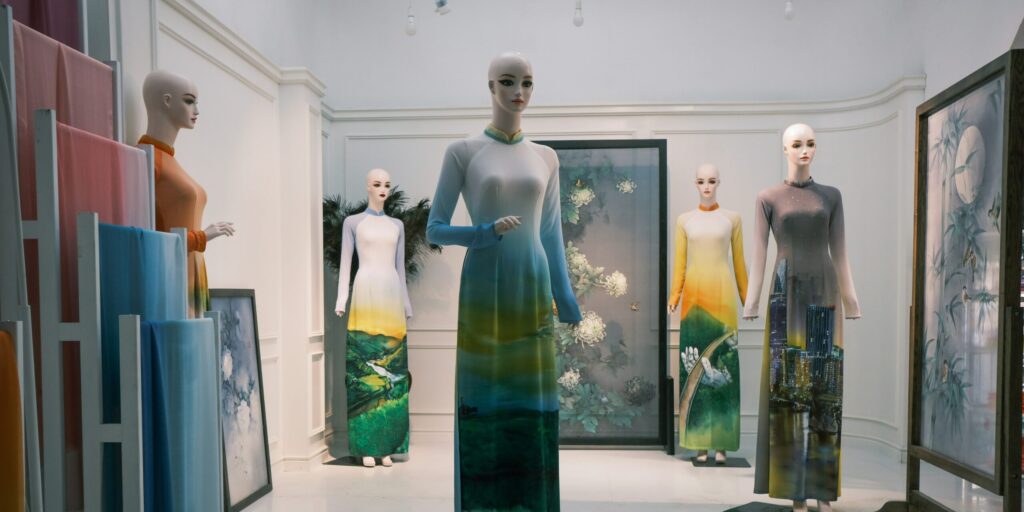Sustainability has firmly taken center stage in the fashion industry in 2025, as consumers are increasingly demanding eco-conscious and ethically produced clothing. With heightened awareness of the environmental impact of fast fashion, both consumers and brands are embracing sustainable practices. From using eco-friendly materials to adopting circular fashion models, the movement toward sustainability is reshaping how clothes are made, sold, and worn. This transformation is not only driven by environmental concerns but also by growing consumer pressure for more ethical practices and transparency in the fashion industry.
The Demand for Sustainable Materials
As consumers become more environmentally aware, they are increasingly opting for clothing made from organic, recycled, and innovative sustainable materials. Fabrics such as organic cotton, hemp, and bamboo have become staples in sustainable fashion collections. These materials are not only biodegradable but also typically have a lower carbon footprint compared to conventional fabrics. Additionally, cutting-edge materials such as mushroom leather, which is made from fungi, and bio-based textiles, which are derived from plants and other organic matter, are gaining popularity due to their eco-friendly production processes.
One of the key players driving this shift is Patagonia, which has long been a champion of sustainable fashion. In 2025, the company announced that its entire clothing line would be made from 100% recycled materials, including recycled polyester, wool, and down feathers. By utilizing these materials, Patagonia aims to significantly reduce its carbon footprint and lessen the impact of textile waste on the environment.
“Our mission has always been to create products that are not just functional but also responsibly made,” said Rose Marcario, CEO of Patagonia. “As consumers demand more transparency, we’re committed to providing them with the products they need while respecting the planet. Sustainability isn’t just a trend for us—it’s at the core of everything we do.”
Other brands are following Patagonia’s lead by incorporating sustainable fabrics into their collections. For instance, H&M, one of the largest fashion retailers in the world, has expanded its Conscious Collection, which uses organic cotton, recycled polyester, and other sustainable materials. As consumer demand grows, it’s clear that the use of sustainable materials is becoming a defining characteristic of modern fashion.
The Rise of Circular Fashion
Circular fashion, which encourages the reuse, repair, and recycling of clothing, is gaining momentum in 2025. This model aims to reduce waste and extend the lifespan of garments, addressing one of the biggest environmental problems in the fashion industry: textile waste. Each year, millions of tons of clothing end up in landfills, contributing to pollution and carbon emissions. In response, brands like REI and Levi’s are leading the charge by offering repair services for garments and accepting old clothing for recycling or repurposing.
Levi’s, for example, has introduced a “buy-back” program where customers can return their old jeans, which are then refurbished and resold. This approach not only minimizes waste but also reduces the need for new materials, making the fashion lifecycle more circular.
The concept of renting clothing has also seen a significant rise, particularly among younger consumers who are looking for ways to reduce their environmental footprint. Companies like Rent the Runway and HURR Collective have grown in popularity, offering fashion rental services that allow consumers to rent clothing for special occasions or everyday wear. This model reduces the demand for new garments, providing a sustainable option for those who wish to wear high-quality items without contributing to the environmental costs of producing new products.
By reducing the need for constant purchasing, circular fashion models like renting and recycling promote a more sustainable approach to style. The rise of second-hand and vintage clothing shops, both online and in physical stores, further supports this movement toward circularity. These trends have gained significant traction, especially in a world where waste reduction is a key environmental priority.
Fashion as Activism
Fashion in 2025 is not just about style; it has become a powerful tool for activism. Many designers are using their platforms to raise awareness about environmental and social issues, merging fashion with political and environmental activism. Vivienne Westwood, a longstanding pioneer of sustainable fashion, continues to use her collections to advocate for climate change action. In 2025, Westwood launched a new line made entirely from organic and sustainable materials, featuring bold slogans calling for immediate climate action and a greener future.
“Fashion has the power to inspire and change attitudes,” said Westwood during the collection launch. “By using fashion as a platform for activism, we can bring attention to the environmental issues that need immediate action. Climate change is a global crisis, and fashion is a way to make people pay attention and think about the choices they make every day.”
This integration of activism into fashion is not just limited to luxury designers like Westwood. Many brands, including Stella McCartney and Patagonia, have embraced activism by using sustainable materials and dedicating portions of their proceeds to environmental causes. For example, Stella McCartney’s commitment to cruelty-free, sustainable fashion is part of her broader campaign to change the fashion industry’s harmful environmental practices.
Consumer Education and Ethical Choices
Consumers, especially Millennials and Gen Z, are increasingly looking for transparency in the brands they support. In 2025, ethical consumption has become a priority, with many shoppers choosing brands that align with their values. From the materials used in production to labor practices, consumers are making more informed decisions and demanding that companies take responsibility for their environmental and social impact.
Fashion companies have responded by improving transparency in their supply chains and committing to ethical labor practices. Retailers like Everlane and Reformation have gained popularity by providing consumers with detailed information about their sourcing, manufacturing processes, and environmental impact. The rise of certifications such as Fair Trade and the Global Organic Textile Standard (GOTS) further validates these efforts, allowing consumers to identify brands that meet high sustainability standards.
“Consumers are more knowledgeable than ever about the environmental impact of their choices,” said Rachel Lincoln Sarnoff, Executive Director of the Sustainable Fashion Forum. “This shift in consumer behavior is pushing companies to take sustainability seriously and find new ways to make their operations more transparent and environmentally responsible.”
Looking Ahead: A More Sustainable Future
The fashion industry in 2025 is at a pivotal moment. As sustainability becomes an essential part of the fashion landscape, brands and consumers alike are beginning to embrace eco-conscious practices. From the materials used in production to the way clothing is worn, repaired, and recycled, the shift toward sustainability is reshaping the fashion industry and influencing the choices consumers make.
While challenges remain, such as the need for broader infrastructure for recycling and sustainable production methods, the progress made in recent years signals a positive direction. The rise of circular fashion, increased demand for sustainable materials, and the embrace of fashion as activism all indicate that the future of fashion will be rooted in sustainability and ethical practices.
As consumers continue to demand change and brands respond with more responsible practices, the fashion industry’s transformation is just beginning. By prioritizing eco-friendly production methods, sustainable materials, and consumer education, the industry is laying the groundwork for a more sustainable future.


